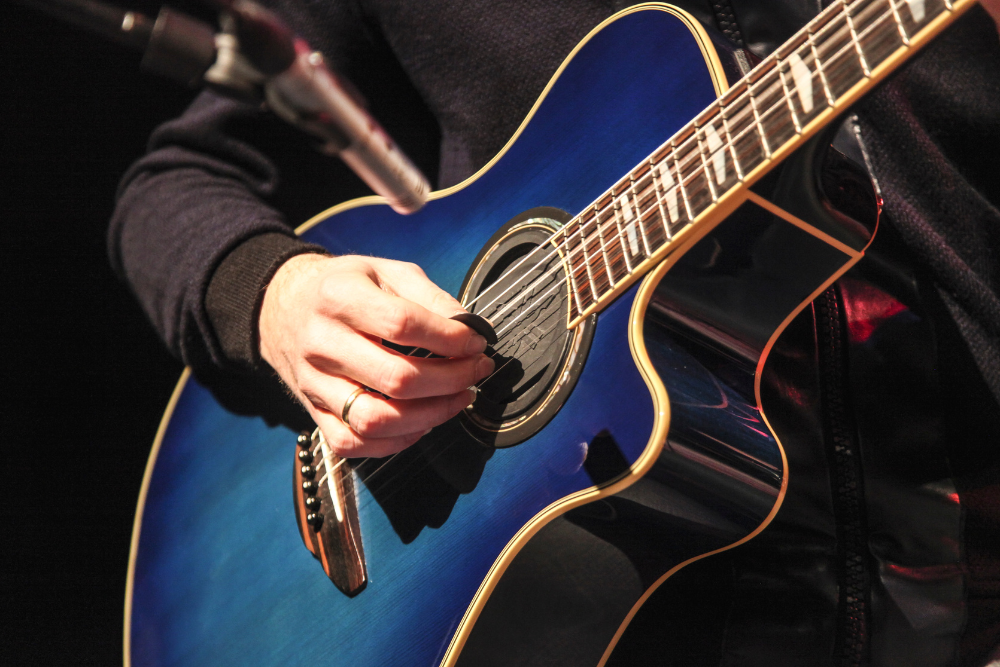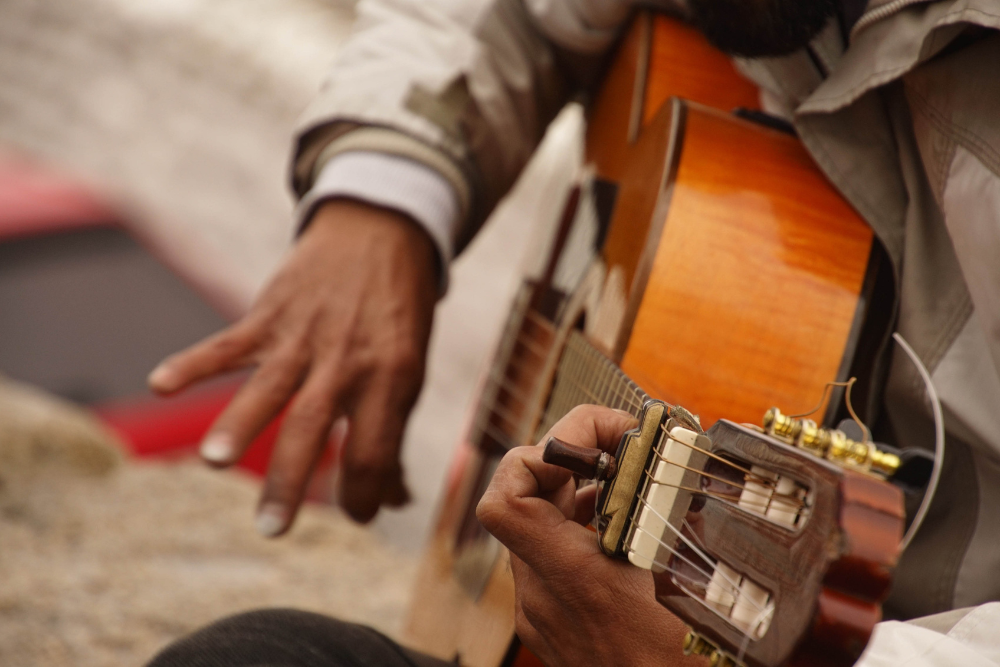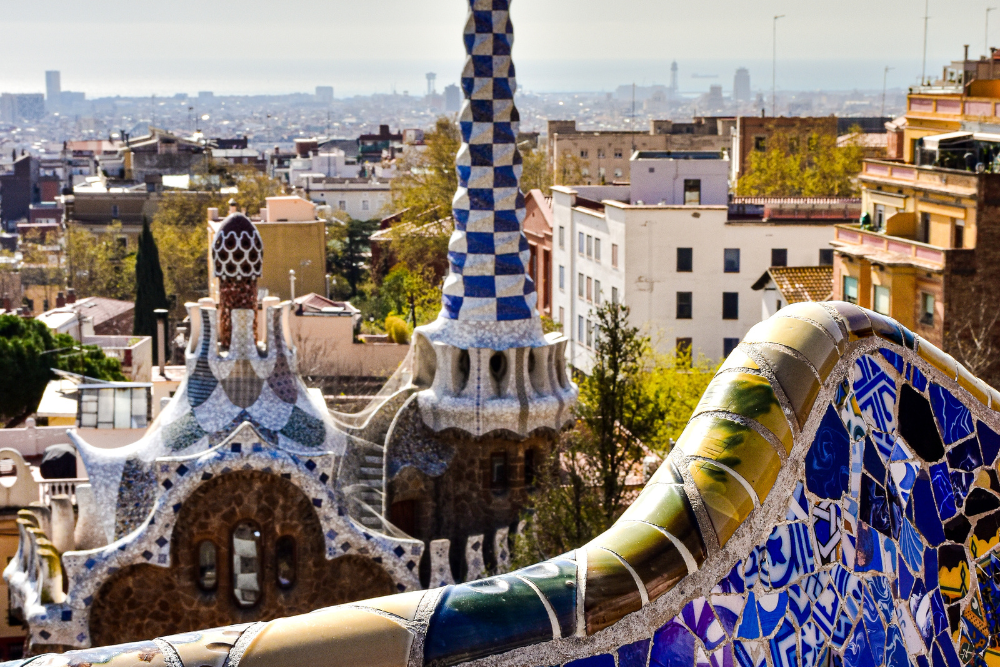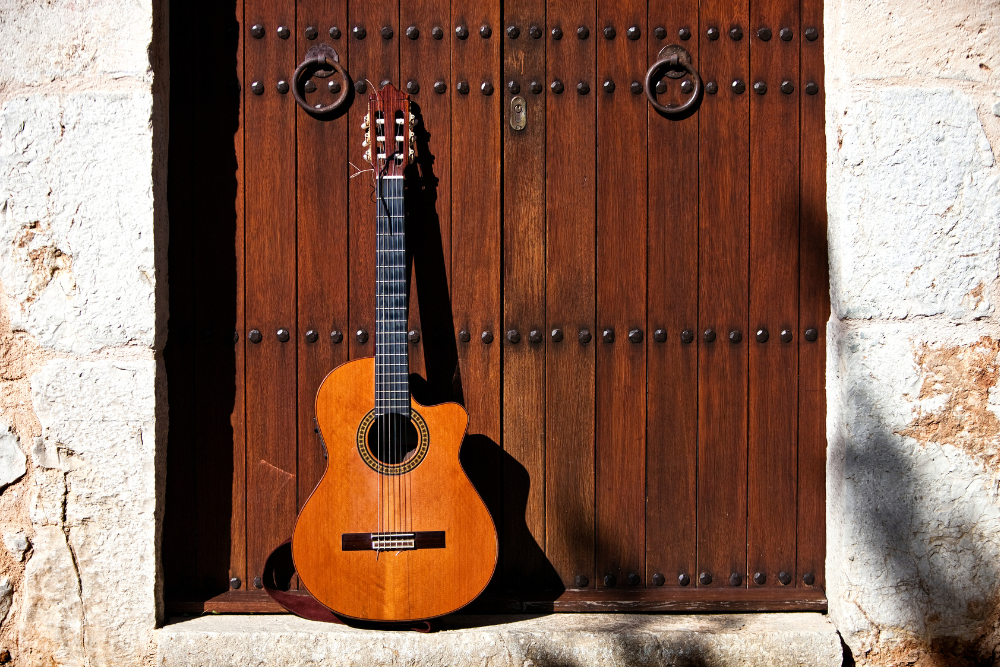The sound of the Spanish guitar is one of the most evocant and emotive musical expressions in the world. With its intricate melodies, vibrant rhythms, and rich cultural history, the Spanish guitar has become synonymous with the country’s identity. Whether played in the quiet of an Andalusian courtyard, during a passionate flamenco performance, or strummed in a lively tapas bar, the guitar’s sound captures the soul of Spain. This guide delves into the magic of the Spanish guitar, exploring its history, regional variations, and the iconic artists who brought its music to life.
1. The Birth of Spanish Guitar: History and Evolution

The origins of the Spanish guitar date back to ancient times, but it was in Spain during the 15th and 16th centuries that it evolved into the instrument we recognize today. Derived from the lute, the early versions of the guitar were smaller, often with a flat back and five strings. By the Baroque period, the guitar had gained prominence, and it began to take on a shape closer to the modern classical guitar.
The 19th century saw the rise of the romantic guitar, crafted with a larger body, deeper resonance, and six strings, which enhanced its expressive capabilities. The invention of the nylon string in the mid-20th century further transformed the sound and playing technique, making it more versatile for different genres.
The Spanish classical guitar became known for its warm, rich tone, and it became the centerpiece of Spanish music across many regions, from the flamenco rhythms of the south to the melodic ballads of the north.
2. Flamenco Guitar: The Passion of Andalusia

No exploration of the Spanish guitar is complete without acknowledging its role in flamenco music. Originating from the southern region of Andalusia, flamenco is a genre of music and dance that blends the cultural influences of Spain’s Gypsy, Jewish, Arab, and Christian heritage. The flamenco guitar is a vital part of this passionate art form, providing the rhythmic foundation and emotional depth to the performance.
Flamenco guitarists use complex techniques, including rasgueado (rapid strumming), alzapúa (thumb technique), and picado (fast plucking), to create a sound that mirrors the intensity of flamenco dance. The guitar’s percussive rhythms complement the zapateado (footwork) and the emotional vocal styles of the singer, making flamenco an immersive experience for both performer and audience.
3. Classical Guitar: The Art of Precision and Expression

In contrast to the fiery rhythms of flamenco, classical Spanish guitar music represents a more structured and intricate form of artistry. Classical guitar playing in Spain is a centuries-old tradition, with influences from Baroque, Romantic, and Modernist musical eras. Spanish classical guitar is noted for its emphasis on technique, control, and delicate phrasing, with the use of fingerstyle playing.
The classical guitar repertoire features iconic Spanish composers such as Francisco Tárrega, Isaac Albéniz, and Manuel de Falla. Tárrega’s compositions, like “Recuerdos de la Alhambra”, are among the most beloved pieces in the classical guitar canon, known for their use of tremolo, a technique that creates a shimmering, sustained sound.
Classical guitar remains a respected and revered art form in Spain, with universities and conservatories offering specialized training in this genre. In cities like Madrid and Barcelona, concert halls and guitar festivals host performances from world-renowned classical guitarists, continuing the tradition of Spain as the heart of classical guitar music.
4. Regional Styles and Guitar Variations

While flamenco and classical guitar are the most well-known forms of Spanish guitar music, the country’s regional diversity has fostered different styles and guitar variations that are just as rich and fascinating.
- Jota: A traditional dance from Aragon, Castilla and Valencia, the jota is often accompanied by the guitar in a lively, rhythmic manner. The guitar here serves as both a melodic instrument and a rhythmic one, with fast strumming patterns that match the footwork of the dance.
- Rondalla: In the Balearic Islands and parts of Castilla-La Mancha, rondallas are popular folk ensembles where guitars accompany singers in the performance of ballads, often telling stories of love, nature, and everyday life.
- Muñeira: From Galicia, this dance is accompanied by a bagpipe, but the guitar often adds a rhythmic pulse that energizes the performance, providing a distinctive touch to the region’s folk music.
- Fandango: Originating in Andalusia, the fandango is a lively dance that often features the guitar playing a prominent role in driving the rhythm, with rapid strumming and syncopated accents.
Each region of Spain has developed its own guitar traditions, reflecting the unique cultures, languages, and histories that contribute to the country’s diverse musical landscape.
5. Modern Spanish Guitarists and Their Influence

While the classical and flamenco guitar traditions continue to thrive, modern Spanish guitarists have found innovative ways to blend these rich traditions with contemporary genres like jazz, rock, and world music. Artists like Paco de Lucía, Vicente Amigo, and Tomatito have pushed the boundaries of flamenco guitar, incorporating elements of jazz and classical music to create a unique fusion sound. Their groundbreaking work has earned them international acclaim, elevating Spanish guitar to a global stage.
Juanes, the Colombian singer-songwriter, also blends Latin pop with Spanish guitar, creating melodies that resonate with a new generation of listeners. Guitarists like Manuel Barrueco and Julian Bream have bridged the classical guitar world with international audiences, touring globally and showcasing the intricacies of Spanish classical music.
Conclusion: The Eternal Sound of Spain
The magic of the Spanish guitar lies in its ability to evoke emotion, tell stories, and connect people through music. Whether it’s the fiery rhythms of flamenco, the delicate phrasing of classical pieces, or the evolving fusion of modern guitar sounds, the Spanish guitar remains an indelible part of the country’s cultural legacy. Its music resonates across the ages, filling the streets, concert halls, and homes with a sound that is distinctly Spanish and universally captivating. To experience the magic of Spanish guitar is to understand the heart of Spain itself—passionate, timeless, and always alive with rhythm and melody.












